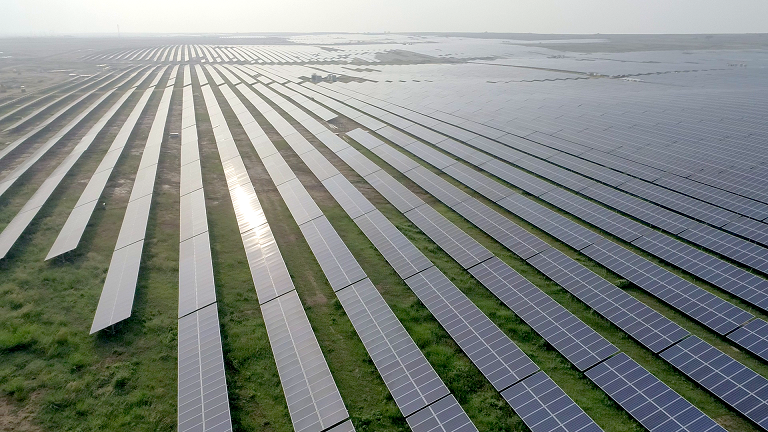The dynamic landscape of India’s energy transformation positions the sun and the wind energy as stalwarts of progress. Solar and wind energy, two clean and abundant resources in India, have emerged as the twin pillars that collectively account for over 50% of the total renewable energy capacity in India. As the nation moves forward toward its ambitious renewable energy targets, these technologies will carve the way for a sustainable future.
India’s journey toward sustainability is both a necessity and a responsibility. Solar and wind energy with their abundance and compatibility with India’s diverse climate patterns, optimize energy generation throughout the year.
These renewable sources of energy have empowered many states with green solutions. Regions across India are carving their green legacy with distinct contributions to the solar and wind energy landscape.
For instance, Rajasthan is a pioneer when it comes to solar energy. Its vast desert expanses are home to some of the country’s largest solar installations, contributing significantly to the national solar capacity.
On the other hand, Gujarat’s coastline hosts some of India’s most prominent wind farms. The Kutch region, with its impressive wind corridors, stands as a testament to Gujarat’s pioneering efforts in wind energy.
In addition to this, Tamil Nadu’s southern coastline and favorable wind conditions have made it a leader in wind energy. The state has also embraced solar power and adopted a diversified approach to renewable energy.
Solar and wind energy collectively account for over 50% of the total renewable energy capacity in the country. They are not just reshaping regional landscapes but also transforming industries.
Solar-powered irrigation pumps are revolutionizing agriculture. Farmers in states like Maharashtra and Andhra Pradesh are benefiting from these clean energy solutions, reducing reliance on fossil fuels and increasing agricultural productivity. Energy-intensive industries are integrating solar and wind power into their operations. From textile mills to luxury hospitality resorts, renewable energy is becoming a cornerstone of sustainable industrial growth.
This progress in solar and wind energy can prove to be a global model to drive renewable energy adoption. Developing nations especially can look at India’s renewable energy sector growth as a blueprint. The adoption of solar and wind energy will not just support industry growth but also empower local communities. Distributed solar installations on rooftops and decentralized wind farms have the potential to make communities self-sufficient in energy. This decentralized approach democratizes energy access and empowers individuals to contribute to the nation’s energy transition.
With strategic investment from the government and private sector and a favourable policy framework, the sector can witness accelerated growth contributing to green energy goals of India.
The synergy between solar and wind energy will continue to drive India’s transition to a low-carbon economy.
The views and opinions expressed in this article are the author’s own, and do not necessarily reflect those held by pv magazine.
This content is protected by copyright and may not be reused. If you want to cooperate with us and would like to reuse some of our content, please contact: editors@pv-magazine.com.








By submitting this form you agree to pv magazine using your data for the purposes of publishing your comment.
Your personal data will only be disclosed or otherwise transmitted to third parties for the purposes of spam filtering or if this is necessary for technical maintenance of the website. Any other transfer to third parties will not take place unless this is justified on the basis of applicable data protection regulations or if pv magazine is legally obliged to do so.
You may revoke this consent at any time with effect for the future, in which case your personal data will be deleted immediately. Otherwise, your data will be deleted if pv magazine has processed your request or the purpose of data storage is fulfilled.
Further information on data privacy can be found in our Data Protection Policy.